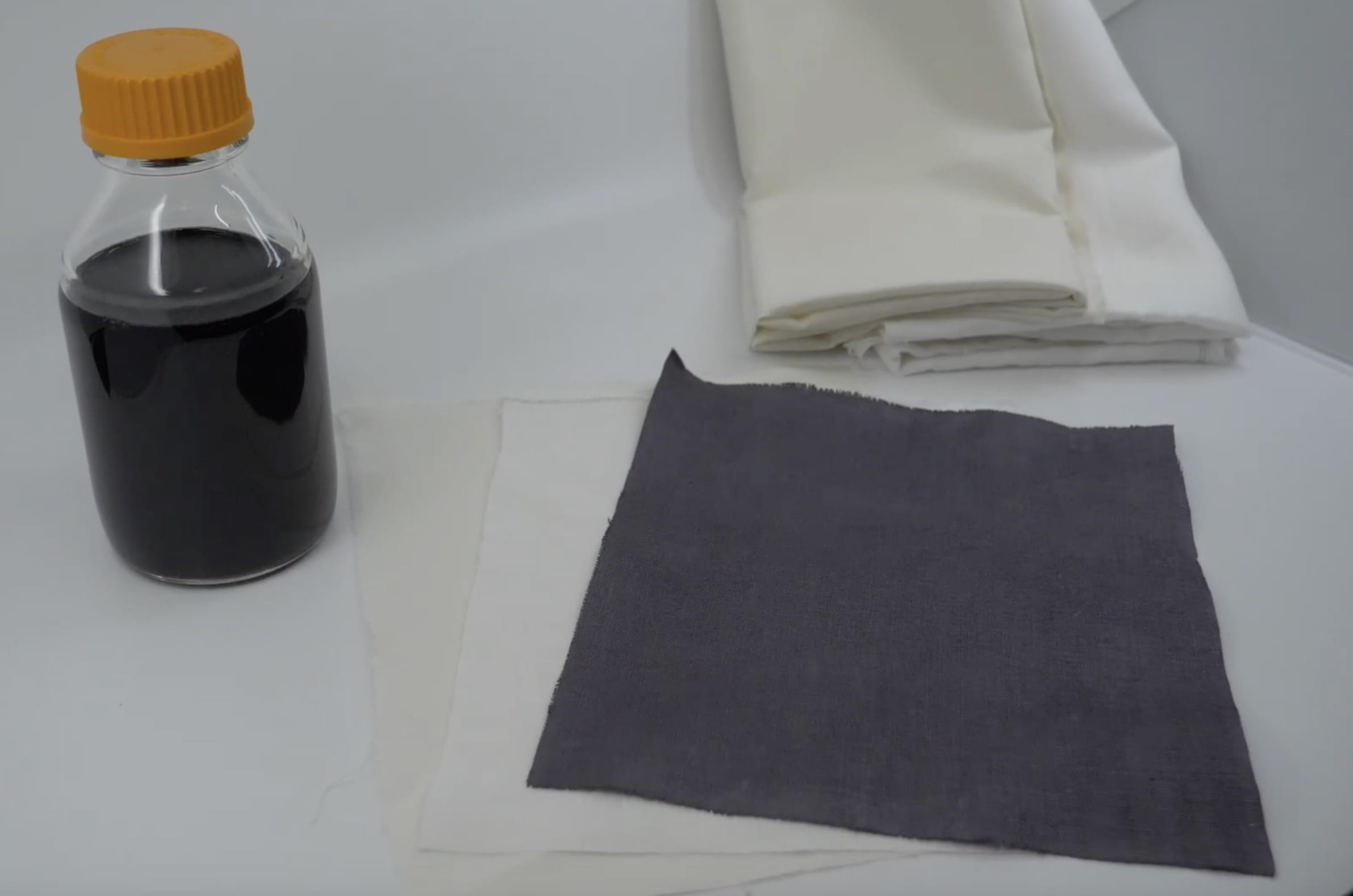Faraday Fabric? MXene Coating Could Prevent Electromagnetic Interference in Wearable Devices

- Drexel Selects New, World-Class Life Sciences Building at 3201 Cuthbert Street for Medical Research Operations
- Breakthrough on Gene Therapy for Hereditary Spastic Paraplegia
- Drexel Environmental Collaboratory Releases Cross-Sector Findings on Severe Weather Recovery Challenges
- Drexel Launches the Manuel Stamatakis Center for Alternative Investments at the LeBow College of Business

Adding a coating of MXene to cotton or linen fabrics gives them the ability to block electromagnetic interference, according to new research out of Drexel's College of Engineering.
Researchers at Drexel University’s College of Engineering have reported that fabric coated with a conductive, two-dimensional material called MXene, is highly effective at blocking electromagnetic waves and potentially harmful radiation. The discovery is a key development for efforts to weave technological capabilities into clothing and accessories.
Materials that block electromagnetic waves had a commercial moment a handful of years ago when fears that high-tech thieves could scan or copy credit cards, passports or hack into laptops and contactless car keys had people putting them in special wallets, bags and protected pockets. While reporting suggests these fears were overblown, the demand for this sort of textile is likely to grow as more manufacturers incorporate sensing and communication technologies into fabrics.
They could also be deployed in national defense organizations to shield devices from tracing and hacking and to protect people from strong microwave radiation – the kind that might have been used against American and Canadian diplomats according to recent reports.
“Wearable devices will need shielding from the electromagnetic interference (EMI) regularly produced by mobile devices, and that shielding should be integrated as part of the garment,” said Yury Gogotsi, PhD, Distinguished University and Bach professor at Drexel, who led research recently published in the materials science journal CARBON. “We have known for some time that MXene has the ability to block electromagnetic interference better than other materials, but this discovery shows that it can effectively adhere to fabrics and maintain its unique shielding capabilities.”
The interference comes from residual electromagnetic fields produced by electronics devices. Users notice it as a buzz, a slowing or temporary stall in a device’s function. It’s a momentary inconvenience, but these moments are becoming more frequent with expanded use of mobile devices and connected technology – including wearables.
Improving the design of these devices, according to Gogotsi, entails using a shielding material to contain electromagnetic field generated by the device, as well as protecting it from interference produced by other devices. Gogotsi’s team, which first produced and studied the conductive two-dimensional MXene materials nearly a decade ago, has been testing MXene coatings for this role, with promising results.
“MXenes are well-suited for use as shielding because they can be stably produced as a spray coating, an ink or a paint, so they can be applied to textiles without adding much weight or taking up more room,” Gogotsi said. “We have also discovered that MXene shielding can absorb and reflect electromagnetic waves, so it not only protects the wearable devices and electronic gadgets, but also protects people from strong electromagnetic field.”

The researchers’ most recent finding shows that dip-coating regular cotton or linen fabric in a MXene solution will turn it into an equally formidable shielding material – blocking EMI at greater than 99.9% effectiveness.
MXene flakes suspended in solution naturally adhere to the fibers in conventional cotton and linen fabrics because of their electric charge. This produces a thorough and durable coating, without the need for the pre- or post-treatment processes to produce most commercial conductive yarns and fabrics.
As part of the study, the MXene-coated fabrics were tested after being stored under normal conditions for two years and they showed only a slight drop in shielding efficiency – roughly 10%.
“This work provides a much-improved alternative to current EMI shielding textiles,” said Simge Uzun, a doctoral student in Gogotsi’s research group, who conducted this research as a part of her PhD program. “Not only do MXene-coated fabrics exceed the performance of commercial metal-coated fabrics, but they can be sustainably produced by coating form aqueous solution without extra processing or chemical additives.”
This research was supported by the U.S. Department of Energy.
In addition to Gogotsi, Genevieve Dion, of Drexel’s Center for Functional Fabrics; Meikang Han, PhD, Kanit Hantanasirisakul, and Adam Goad, of the A.J. Drexel Nanomaterials Institute; and Christina Strobel, an Electrical and Computer Engineering undergraduate student who worked in Gogotsi’s lab in the Department of Materials Science and Engineering, participated in this research.
Read the full paper here: https://www.sciencedirect.com/science/article/abs/pii/S0008622320311982
Drexel News is produced by
University Marketing and Communications.